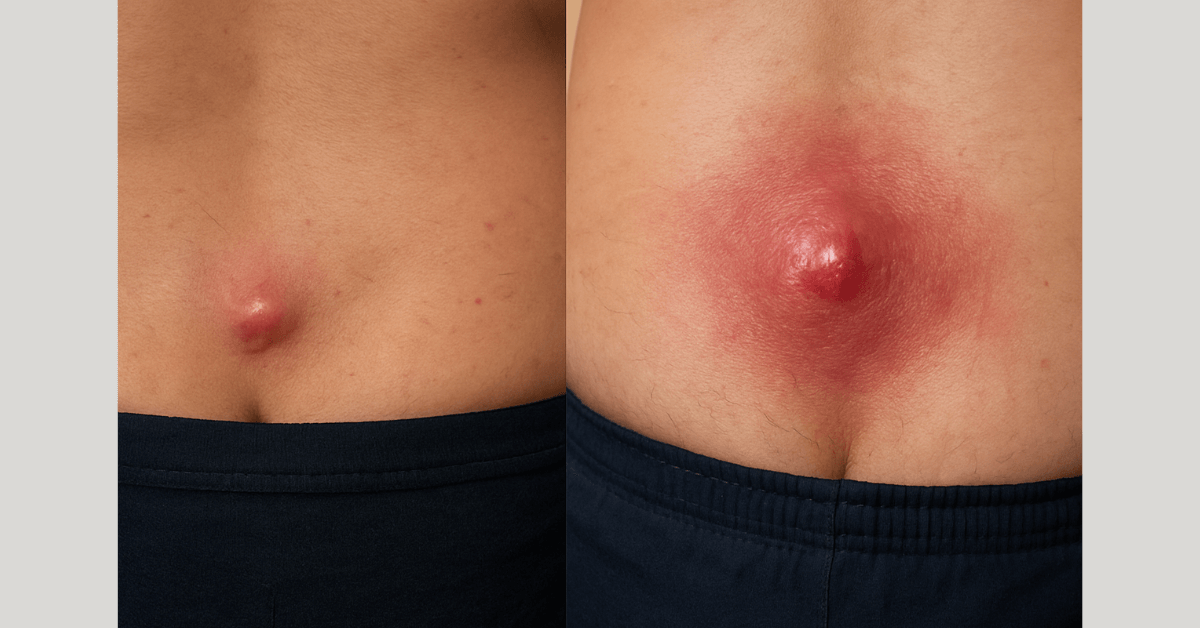Many people wonder, can fistulas heal naturally without surgery or medical intervention? While it is tempting to hope a fistula might close on its own, the reality is more complicated. Anal fistulas are persistent infections that often form a tunnel between the skin near the anus and the anal canal. This passage allows bacteria and pus to travel, keeping the infection alive.
In most cases, fistulas do not heal naturally. The internal opening rarely closes by itself, and the ongoing presence of infection makes self-healing very unlikely. Although mild symptoms might improve temporarily, the underlying problem usually remains. Therefore, medical evaluation is essential for a lasting solution.
What Causes Fistulas to Form?
To understand why fistulas rarely heal naturally, it helps to look at their causes. An anal fistula usually develops after an anal abscess fails to heal properly. When an abscess drains but the opening between the internal gland and the skin stays open, a tunnel forms. This tunnel becomes the fistula.
Common causes include:
- Anal abscesses or blocked anal glands
- Crohn’s disease or other inflammatory bowel conditions
- Radiation therapy for cancer
- Tuberculosis or sexually transmitted infections
- Complications from rectal surgery
Since most of these causes involve chronic inflammation or infection, the body struggles to heal the fistula on its own. In fact, untreated fistulas can worsen or form multiple tracts.
Fistula Symptoms That Should Not Be Ignored
Even when symptoms seem manageable, they often indicate an ongoing infection. Recognizing the signs early can help prevent serious complications.
Key symptoms include:
- Persistent anal pain or swelling
- Pus or blood draining from a hole near the anus
- Skin irritation or foul-smelling discharge
- Redness or tenderness in the anal area
- Fever during an active infection
If you notice these symptoms, especially after a previous abscess, you should not delay medical care. Waiting for a natural cure may only increase the risk of chronic infection and tissue damage.
Why Natural Fistula Healing Is Rare
The anal region is constantly exposed to bacteria, pressure, and movement. These conditions make natural healing nearly impossible. The internal opening of a fistula allows stool and bacteria to enter the tract repeatedly, keeping the infection active.
Even with a healthy immune system, the body struggles to close the fistula without help. In some cases, the drainage may decrease temporarily, leading people to think it is healing. However, the tunnel remains open beneath the surface.
In addition, repeated inflammation can damage nearby tissue. The longer a fistula remains untreated, the more difficult it becomes to close, even with surgery.
Home Remedies: Are They Effective or Risky?
You may come across online suggestions like warm compresses, sitz baths, or herbal creams to treat a fistula. While these remedies might ease discomfort, they cannot cure the fistula.
Warm baths may improve symptoms like itching or minor drainage, but they do not address the root problem. Using herbal remedies without medical supervision may even worsen the condition.
Therefore, it is important to understand that while home care may offer relief, it should not replace medical treatment.
Safe Fistula Treatment Alternatives to Natural Healing
Because natural healing is so rare, most doctors recommend medical procedures for lasting relief. Fortunately, many safe and effective treatment options are available today.
Fistulotomy
In this common procedure, the surgeon opens the length of the fistula so it can heal from the inside out. It is most suitable for simple, shallow tracts.
Seton Placement
In cases where cutting the tract may risk damage to surrounding muscles, doctors may insert a soft surgical thread called a seton. It keeps the fistula open to drain slowly over time.
Advancement Flap Surgery
For high-risk or complex fistulas, surgeons may use a tissue flap to close the internal opening. This method helps preserve anal muscle and reduce incontinence risk.
Laser Therapy with FiLaC
One of the most advanced and minimally invasive techniques available today is FiLaC (Fistula-tract Laser Closure). Specifically, this procedure uses a radial laser probe to close the tract from the inside. As a result, the laser energy destroys the inner lining of the fistula, allowing the surrounding tissue to close naturally. Moreover, FiLaC preserves healthy tissue and significantly reduces recovery time. Therefore, it has become a preferred option for patients seeking a less invasive yet effective solution.
Benefits of FiLaC include:
- Minimal discomfort
- Very low risk of incontinence
- Short healing time
- High success rate in suitable cases
FiLaC is a powerful option for those looking for safe, effective, and minimally invasive treatment when natural healing is not possible.
Risks of Avoiding Fistula Treatment
Delaying or avoiding treatment while hoping for natural healing can lead to serious complications. These may include:
- Chronic infection and repeated abscesses
- Widening of the fistula tract
- Formation of multiple tracts
- Tissue damage and scarring
- Risk of incontinence due to muscle injury
- Spread of infection into surrounding areas
Seeking early treatment not only prevents complications but also improves the chance of full recovery. The sooner a fistula is treated, the less invasive the procedure usually needs to be.
When to Seek Medical Help for a Fistula
You should see a specialist if you experience any symptoms of a fistula or if an anal abscess does not heal properly. Even if symptoms improve, do not assume the fistula has closed naturally. It is best to get a proper evaluation.
Colorectal surgeons or gastroenterologists can provide imaging tests and recommend the most suitable treatment, including minimally invasive options like FiLaC.
Long-Term Care After Fistula Treatment
After successful treatment, especially with advanced techniques like FiLaC, most patients recover fully. However, proper aftercare is essential to reduce the chance of recurrence.
Aftercare tips include:
- Keep the anal area clean and dry
- Take prescribed medications exactly as directed
- Use sitz baths to soothe the area
- Avoid constipation by drinking water and eating high-fiber foods
- Follow up with your doctor as scheduled
Good hygiene and lifestyle habits can help prevent future complications and support full recovery.
Summary: Can Fistulas Heal Naturally?
To answer the question clearly, can fistulas heal naturally? In most cases, the answer is no. While minor symptom relief is possible, complete healing rarely occurs without medical treatment. Natural healing is especially unlikely in complex or long-standing fistulas.
Instead of waiting for symptoms to disappear on their own, it is much safer to seek medical advice. Treatments like FiLaC (Fistula-tract Laser Closure) offer excellent outcomes with less pain and faster recovery. With today’s technology, you do not have to live with discomfort or risk long-term complications.



